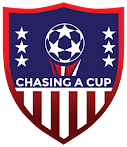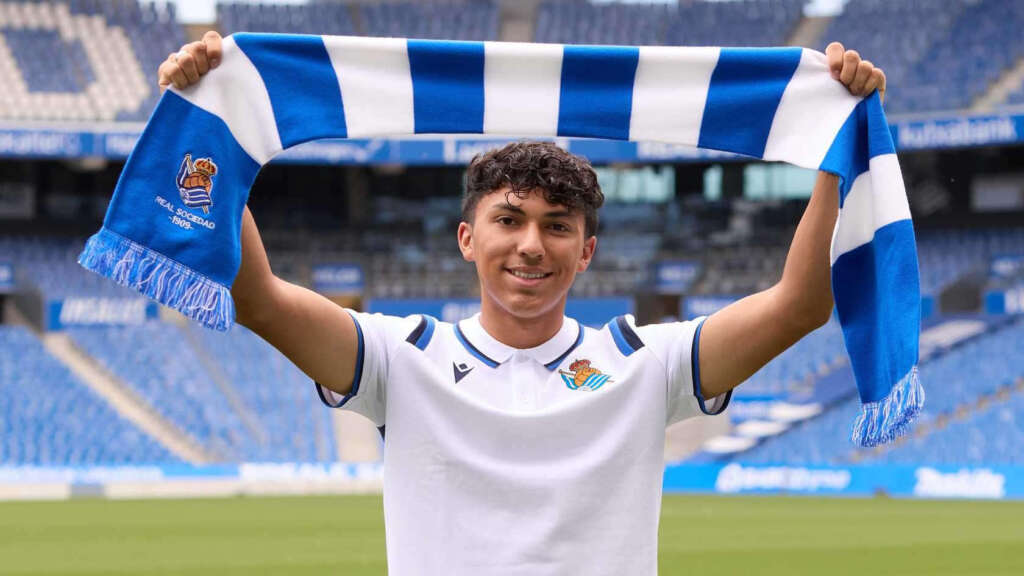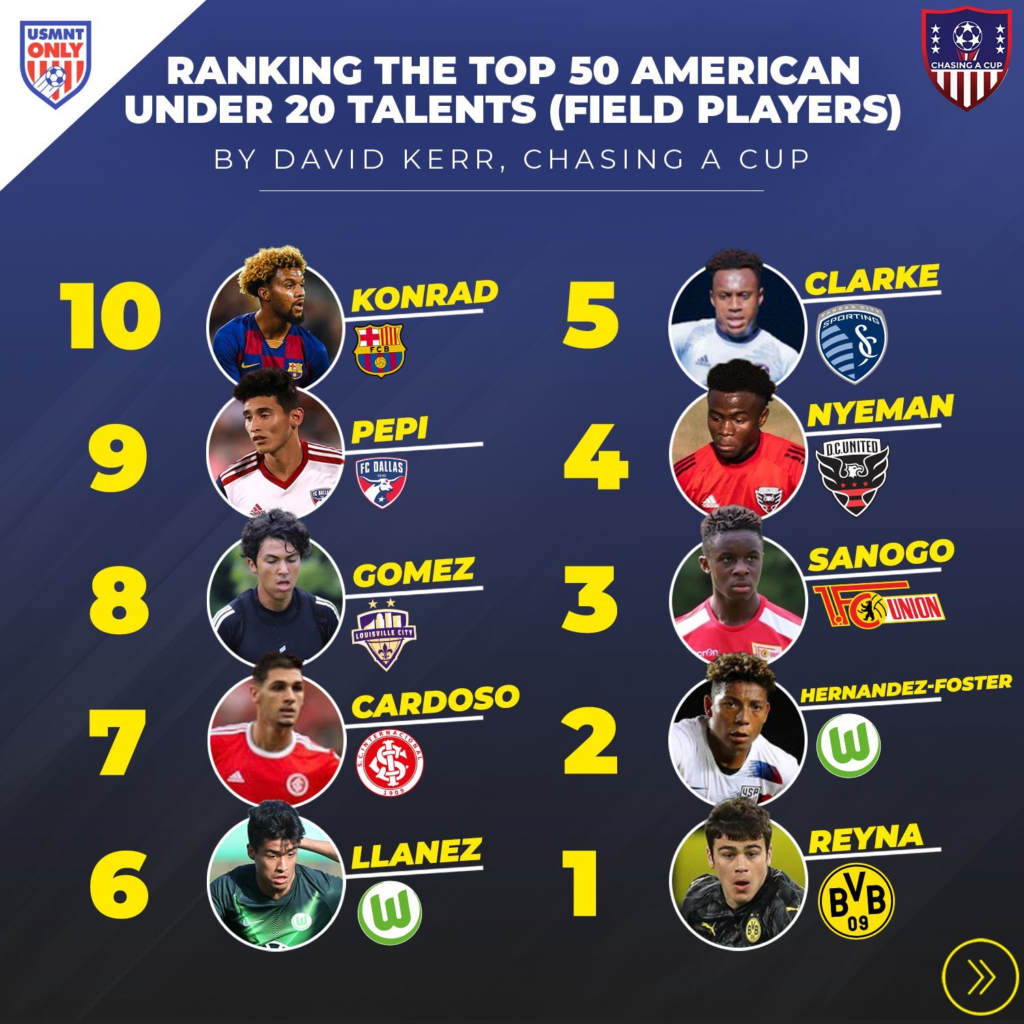

USMNT
2020 Ranking of MLS Academies 23-11
Published
6 years agoon
By
David KerrOver the last decade we saw numerous changes in the American player development ecosystem. All of the changes we made derived from when the United States Soccer Development Academy decide to go from a Spring season league to a 10-month year-round league starting in the fall of 2011.
From there we have seen the quality of the average American soccer player increase, the depth of youth national teams spike, and the rise of Major League Soccer academies. Over the last five years MLS academies have seen a major increase in funding allowing them to provide better coaching, a professional training environment, a laid-out pathway to professional soccer, and better opportunities to go pro either through their teams or through opportunities to be found by a European scout.
The academies have become stable enough that U.S. SOCCER decided to close the under-17 men’s national team residency down in Bradenton as the clubs would actually provide a better environment for players to develop in.
Now as we head into the new decade we will see the MLS academies grow and provide a system that elite players all over the country will be able to join and fight for a chance to become a professional soccer player. Now we are seeing a few clubs who have earned the right to say they are the best of the best in youth development and we have clubs who used to not care about player development who have begun investing in their club to produce their own homegrown talent. Here I will lay out my opinion of where each active American Major League Soccer academy ranks amongst each other and will explain why I have determined these rankings.
The MLS Academies Rankings
Counting backward from 23. The first four teams are ranked at the bottom because their academies are so young that it is unfair to judge them on the same curve as the other 19 academies.
23. Nashville SC

Nashville comes in last in this list because while they do have an MLS team, their academy will not start their first season until later this year. THe academy will be completely hit or miss. When you look at southern states like Tennessee, Alabama, and Louisiana there is a lot of production in other sports (mostly football) so there is hope that they can launch a successful academy in a market that really has not shown much care for soccer.
If they can identify and recruit players out of Alabama, Mississippi, and Louisiana to go along with the best players from Tennessee, then they do have a chance to produce some gems as those states do have the talent. The only thing to do is sit back and watch them work.
22. FC Cincinnati

FC Cincinnati better get used to not being very good as their academy will likely be one of the worst MLS academies in the league for a long time. Larry Sunderland is a very good coach but they will need to actively recruit around the country to find players and will be competing for players against other small market clubs with much better track records. The area of Cincinnati has been very poor at developing players. Bobby Puppione’s time at Cincinnati United Premier saw some very good players come through but none that would have been good enough to step up to the MLS level.
They are a club that is in an area that does not have a lot of talent, surrounded by other cities with their own professional soccer academies (Louisville City FC, the Columbus Crew, and most likely Indy 11 at some point) and a club without much of a track record for player development will make things challenging to bring youth into their first team. I would not expect this club to see results from their academy and I hope that Larry Sunderland can go to another club because he is too good of a coach to fight a losing battle.
21. Minnesota United

Minnesota United are about a year or two away from no longer being considered a new academy so they will need to start signing their talented local players. They have rolled out their academy in as slow of a manner as possible which is a huge knock against them as they are now in their third year of having an academy and have only signed Fred Emmings, a goalkeeper. One has to wonder why they did not choose to absorb the Minnesota Thunder or Shattuck St Mary’s academies like Atlanta, who came into the league the same season, did with Georgia United which allowed them to immediately sign Andrew Carleton, Chris Goslin, George Bello, Patrick Okonkwo, and Lagos Kunga.
The positives for Minnesota United are that they do have two very talented players in their academy. Their next homegrown signing will be Patrick Weah, the cousin of Tim and nephew of George Weah. Patrick Weah however, is not the most talented player in their academy. That title belongs to Bajung Darboe who is already playing up at the u16/17 level (2003’s) as a 2006. Darboe is one of the best players of his age group and will be a key player for youth national teams until the 2028 Olympics where he will still be eligible. Minnesota needs to sign both players as soon as possible.
20. Inter Miami

The best of the new academies is Inter Miami. They are owned by David Beckham who knows more than all what it takes to develop players. Beckham has stated multiple times that Miami plans to be a youth first club and seeing as how they are in a soccer hotbed in southern Florida there is a very good reason to be optimistic that this academy will be a conveyor belt of elite players every year.
There are two players to particularly be excited about in their academy currently: Franky Raggio and Axel Perez. Raggio has just been seen training with the u23 men’s national team and it should be assumed that he will be the club’s first homegrown signing. Axel Perez is the player that people should keep an eye on over the years. Perez is very young (he is a 2007 and turns 13 this year) but has the composure, technical skills, and soccer IQ of a player much older than him and is a player who is regarded by many to be a potential wonder kid and is the best player in his age group so far, keep an eye on him.
__________________________________________
Rankings 19-1 are of the established MLS academies who have had ample opportunity to develop a competitive and quality academy.
19. Portland Timbers

Portland has taken the prize for the worst Major League Soccer academy. The only teams ranked lower than them are there because they are so young that you can’t actually rank them fairly. Portland has literally done nothing with their academy since they became a team in 2011. Their best academy product is Marco Farfan… yes, I know, that’s depressing to think about.
There are no excuses for their complete lack of success as other teams in smaller markets have managed to develop their own prospects. Portland had a gem in Rubio Rubin who they couldn’t even convince to join their academy as he elected to play for Westside Metros instead. They destroyed the career of Adrian Villegas as well who was a pretty promising midfielder. The only player in their academy with a future in professional soccer is Masango Akale, younger brother of former u16 youth national team standout Mukwelle Akale. They are without a doubt, the worst Major League Soccer academy.
18. Orlando City

The only positive about Orlando City’s academy is that they are not as bad as the Portland Timbers but outside of that there is nothing good to say. They have four homegrown players on their roster and only one was signed directly out of the academy which is Jordan Bender. Orlando City is now entering their sixth season so there is no reason that they could not have produced one player capable of getting first team minutes as a teenager. The area is not lacking for talent either so that is not an excuse, just ask Dillon Payne (@DontTreadSoccer) and he will tell you about every talented player the area has ever had and then fall into depression after because Orlando City are so terrible.
The only good thing is that they at least have a USL team that has played academy players but that is literally it, there is nothing else that can be thought of as a positive for this academy. They should not be expected to improve unless they are taken over by new ownership and hire a new GM. If you are an Orlando City fan, I am sorry.
17. Houston Dynamo

The Dynamo’s only successful homegrown is Memo Rodriguez and from there their only real academy prospect is Marcelo Palomino who is back in Houston after not finding a club in Europe. Houston like Chicago sit on top of a massive metro population so the complete lack of production falls directly under the reasoning of the organization being completely incompetent.
There is hope for the Dynamo as they have brought in the best youth coach in the country in USMNT legend and former u20 youth national team coach Tab Ramos. No one in the country knows more about the youth landscape than Tab and no one knows how to better develop young players than Tab. If there was an academy to bet on becoming a power house out of nowhere then bet on the Dynamo. Tab will likely revitalize the Dynamo to become the second homegrown factory in the state and a real rival to FC Dallas.
16. Chicago Fire

Chicago may be the most disappointing of the MLS academies yet. This is because they have had success at the Development Academy level and then refused to sign hardly any players out of high school until 2019. The only exception to this has been Djordje Mihailovic who has plateaued over the course of 2019. They have waited too long to sign players and let them go to college when they could have immediately been signed out of high school. The list of players that apply for this are Mauricio Pineda, Grant Lillard, and Harrison Shipp. The list of players who have played for other clubs in the area or the Fire have passed on signing is down right depressing. Here are some of those names: Andrija Novakovic, Chris Mueller, Emmanuel Sabbi, Joshua Penn, Cam Lindley, Axel Alejandre, Andrew Gutman, Michael Jimenez, Perry Kitchen, and so many more. The most disappointing part is that they discontinued their u18/19 Development Academy team which means that their best prospects have been stuck playing at the u17 level all season which is not a high enough level for their development.
However, there is some very good news. They may have finally learned their lesson! Since the start of 2019 they have actually decided to start signing players including Gabe Slonina, Nick Slonina, Andre Reynolds, Javier Casas, Brian Gutierrez, and Alex Monis. They also have two of the best 2004’s in the country in Allan Rodriguez-Lopez and Justin Reynolds who will be receiving contracts soon enough. On top of that the Fire have also announced a partnership with Forward Madison FC in the USL where they will be able to send all of those signings to get minutes against better competition. If the club’s new ownership decides to dive into the academy then they could quickly become a power house as the Fire are home to the third largest metro-population and have relatively little competition for players compared to other MLS academies.
15. New England Revolution

The best of the worst is the New England Revolution. The good news is they have had some success with Diego Fagundez, and Scott Caldwell. The bad news is that is all they have done since becoming a team in 1996. They should have signed Justin Rennicks when he was 18 but decided to be petty and wait an extra two years just because he went and trained at other clubs in Europe.
There are some positives that have recently developed. They have announced the addition of a USL team and have picked up the rate of signing homegrown players. The potential downside is that Bruce Arena is their coach and he was not exactly friendly to young players during his recent tenure at the Galaxy or with the USMNT (Pulisic doesn’t count). Take the steps they have taken recently with care, we have no idea if the organization will change their ways yet.
14. Los Angeles FC

LAFC ranks very high for a brand-new academy because they already have numerous prospects who are contract ready including Antonio Leone, Erik Duenas, Luis Lima, Donovan Palomares, and Christian Torres. At the rate they are going, they will quickly surpass LA Galaxy’s academy in the same manner as how their first team has quickly emerged as the best soccer team in the city of LA.
What they need now is to sign their first player (looking right at Antonio Leone) and launch a USL team to house all of these young prospects that they are producing.
LAFC has done a fantastic job in developing what I think is the best local scouting networks amongst MLS academies. If you haven’t taken a listen to the Scuffed podcast with LAFC Academy Director Todd Saldana I highly suggest that you do. At the rate LAFC are going, the will become the top academy before the end of the decade.
13. San Jose Earthquakes

San Jose is an academy that is improving but still has a long way to go. They have been a club since 1996 and have managed to only sign seven homegrown players which is to put it lightly… awful. With those homegrown’s they have seen some moderate success as Nick Lima and Tommy Thompson (still the greatest name of all time) have both made regular appearances for the first team over the years and Lima has received nine USMNT caps since Gregg Berhalter took over which is a big positive for the Earthquakes academy. But only seven homegrown players in 24 years as a club is a haunting number. The good news is that four of the seven are 18 or younger so they are trending up as of late.
The key for their academy success is obvious, identify, develop, and sign more players. The Earthquakes sit on top of the fifth largest combined statistical area according to the 2018 census so there is a huge market to get players but they have to start scouting the area more first and make sure the best area talent is in their system. The talent they have signed over the last three years in Gilbert Fuentes, Jacob Akanyirige, Cade Cowell, and Casey Walls are all quality players who have gotten great USL experience and Cowell may potentially be in the immediate first team plans as he made his MLS debut on March 7th this year. So, overall the last few years have been positive for the Earthquakes but they have the potential to be doing much better.
12. Atlanta United

Atlanta United does a great job at producing great prospects at the academy level but they have done a horrific job of taking those academy products and turning them into first team players. Andrew Carleton was the undisputed best prospect for his age group and is now playing for Indy 11 because the first team has failed him, Chris Goslin was a top midfield prospect for the 2000’s and was released from his contract… last I know he was playing in Armenia.
They still have a chance to break the cycle with George Campbell and George Bello. Bello would have been their first homegrown success if not for some very unfortunate injuries. Atlanta are aware of their mistakes as shown in this article by Felipe Cardenas.
What Atlanta does well is identifying talented prospects and turning them into USL level players but taking the next step and getting a player to go from USL to MLS has been a test that Atlanta has yet to pass. Once they can unlock the secret that other clubs have seem to figured out then they will become a youth development gold mine. Their academy is stacked with talent with players like Nigel Prince, Efrain Morales, Will Reilly, Daniel Mangarov, Jackson Conway, Tyler Wolff, Caleb Wiley, Kobey Stoupp, Brendan Lambe, Andrew Durkin, Alan Carleton, Italo Jenkins, Ty Wilson, Ty Wilson and more. If they can finally turn academy players into first team players then they will completely change the player development game and immediately become a top tier academy, but they can’t keep being a homegrown graveyard like they have been up until now or they will fall down this list.
11. Columbus Crew

Columbus have had one incredibly successful homegrown in Wil Trapp and then they have had unsuccessful homegrown players in Ben Swanson and Matt Lampson. Their academy has been improving as of late as they have been ramping up their funding and recruiting efforts which has paid off in three recent signings of Aboubacar Keita, Aidan Morris, and Sebastian Berhalter. They do have some talent in the academy in Elton Chifamba, Sam Sarver, and Noah Hall that should be signed within the next year as well. What is keeping them from the top ten is that under Gregg Berhalter they did not incorporate youth prospects well outside of Wil Trapp who was the poster of the club for the last year.
Columbus need to tap into the Cleveland market more which is completely underserved and sign their promising talents and loan them to USL teams (or… launch your own program that can play at Mapfire Stadium which will soon be vacant). Columbus let players like Aboubacar Keita, Aidan Morris, Sebastian Berhalter and Isaiah Parente go to college when they all should have been signed out of high school and loaned out to get better experience than what college soccer provides. If they can sign, develop, and integrate homegrown players into USL teams and MLS teams at a quicker rate then they will quickly rise up this list.
Check out 10-1 top MLS academies.
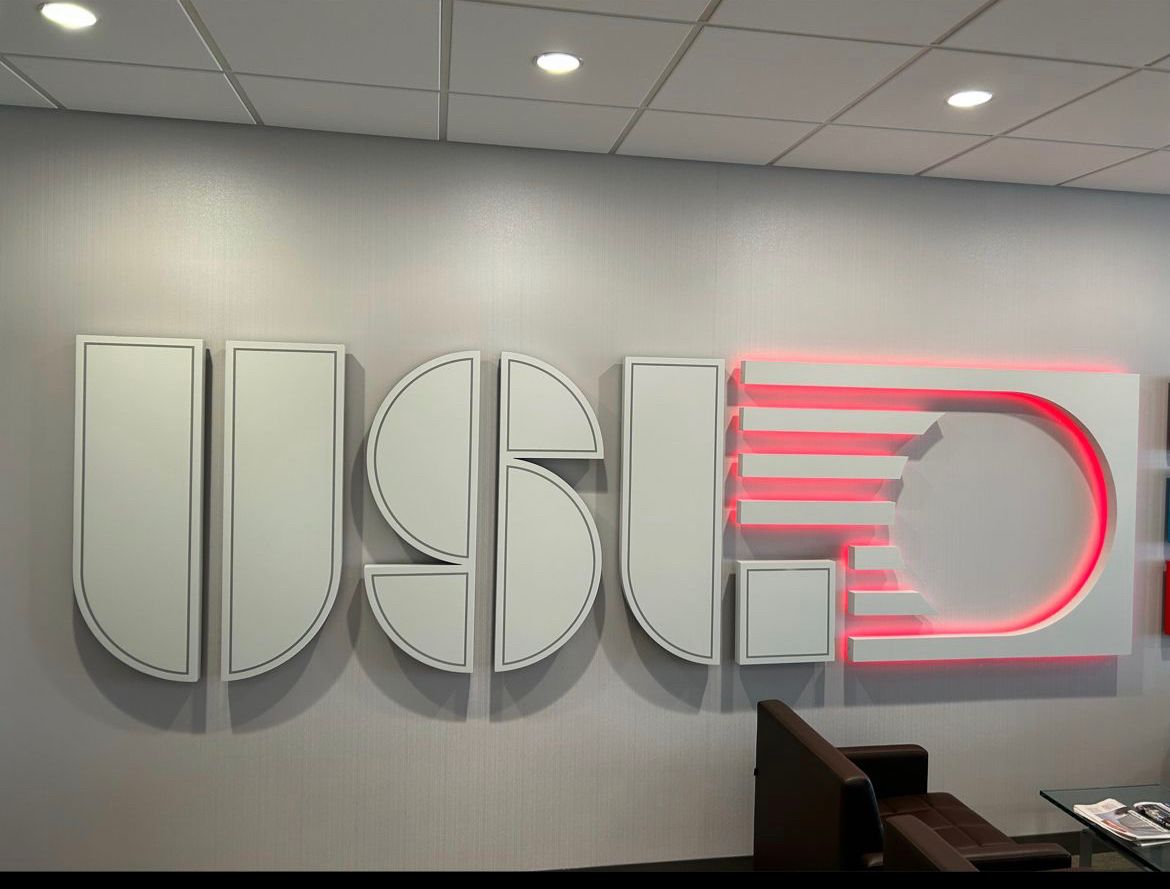
USL made national headlines when they announced on February 13th, 2025, their plans to launch a Division One league, followed by the announcement of promotion/relegation on March 19th for the new Division One league, the Championship, and League One. If sanctioned by US Soccer, USL Division One would be of equal status to MLS and compete for the best major soccer league in the U.S. The implementation of promotion/relegation in the USL would become the first in the U.S. and test the question asked for many years, “would pro/rel work in the U.S.” USL HQ informed the public that they planned to have the inaugural season of Division One during the 2027-2028 season with promotion/relegation beginning in 2028.
Until November 3rd, with the announcement of Tony Scholes being hired as the President of the Division One, only three teams have applied for membership to the inaugural season of Division one: Louisville City, North Carolina FC (who announced at the time of the Scholes news that they would fold until the launch of Division One), and Pittsburgh Riverhounds. There has been a rapid expansion of teams in the already existing leagues since the two announcements. Teams joining League One are: Fort Lauderdale FC (2026 debut), New York Cosmos (2026 debut), Port St. Lucie SC (2027 debut), Sporting Cascades FC (2026 debut), and Rodeo FC (2027 debut). Fort Wayne FC and Sarasota Paradise would also be joining League One from League Two (2026 for both teams). For the Championship, Reno, NV will once again have a team planned for a 2027 debut. Along with those teams, USL is actively working to expand to other markets. The markets and partners they are looking at are Brevard County, FL (Space Coast Pro Soccer), Riverside, CA (Riverside Pro Soccer), Brownsville, TX (City of Brownsville), Winter Garden, FL (Central FL Pro Soccer), Santa Rosa, CA (City of Santa Rosa), and Pensacola, FL (City of Pensacola).
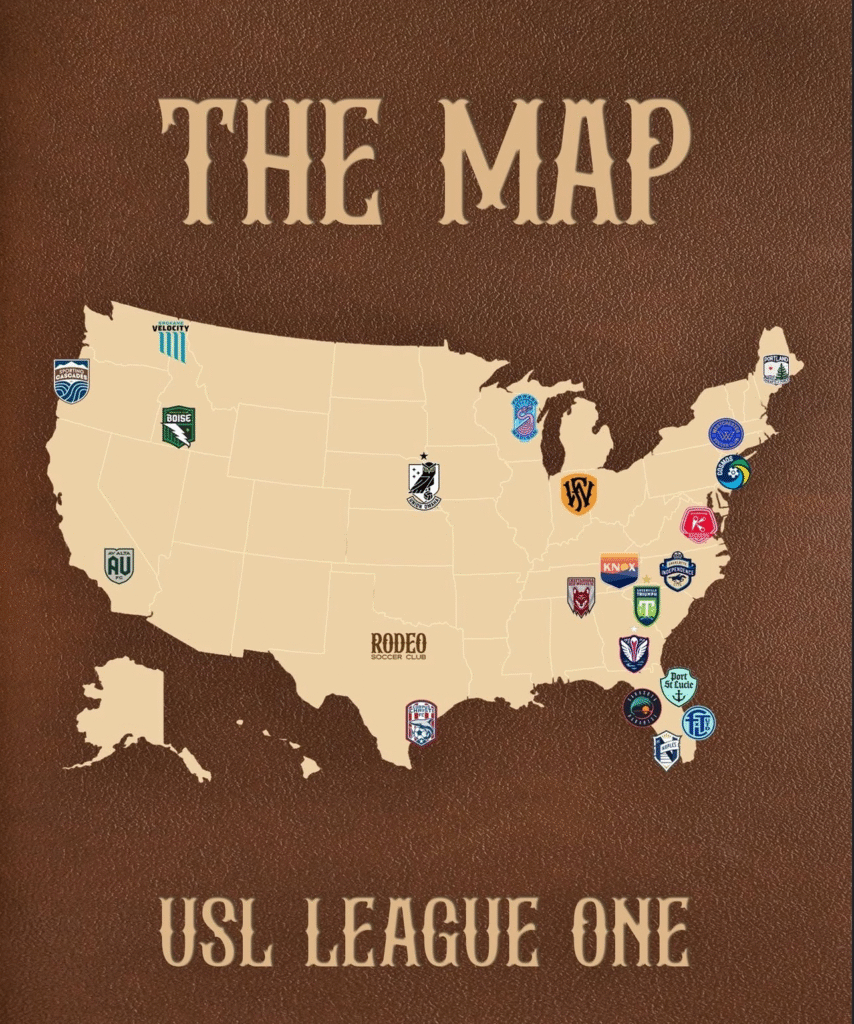
Along with these recently announced teams and partnerships, USL has teams joining the organization just in time for promotion/relegation that were announced prior to the February and March news. Starting with League One, these teams include: Corpus Christi FC (2026 debut) and Athletic Club Boise (2026 debut). As for the Championship, they will be adding Brooklyn FC (2026 debut), Sporting Jax (2026 debut), Atlético Dallas (2027 debut), Milwaukee Pro Soccer (TBD), USL Pro Iowa (TBD), Buffalo Pro Soccer (TBD), and Ozark United FC (2027 debut), while Santa Barbara Sky FC (2027 debut) would replace Memphis 901 FC.
Other than that, news on the Division One and promotion/relegation had been quiet until USL snatched Tony Scholes from the English Premier League. Tony Scholes will be the President of Division and help with the implementation of promotion/relegation. Scholes served as the chief football officer of the EPL and will join USL at the end of the EPL season. As of November 15, 2025, USL Division One has not been sanctioned as a division one league by US Soccer. The hiring of Scholes indicates that they are confident this new league will get approved or they have already been told it will, behind closed doors. The fact that we have not heard news on what the promotion/relegation format would be, and Scholes task would be to help implement it could mean that USL has not come to a decision on one. Since we do not have any ideas on what the format could be, I want to provide a possible option that they could go with.
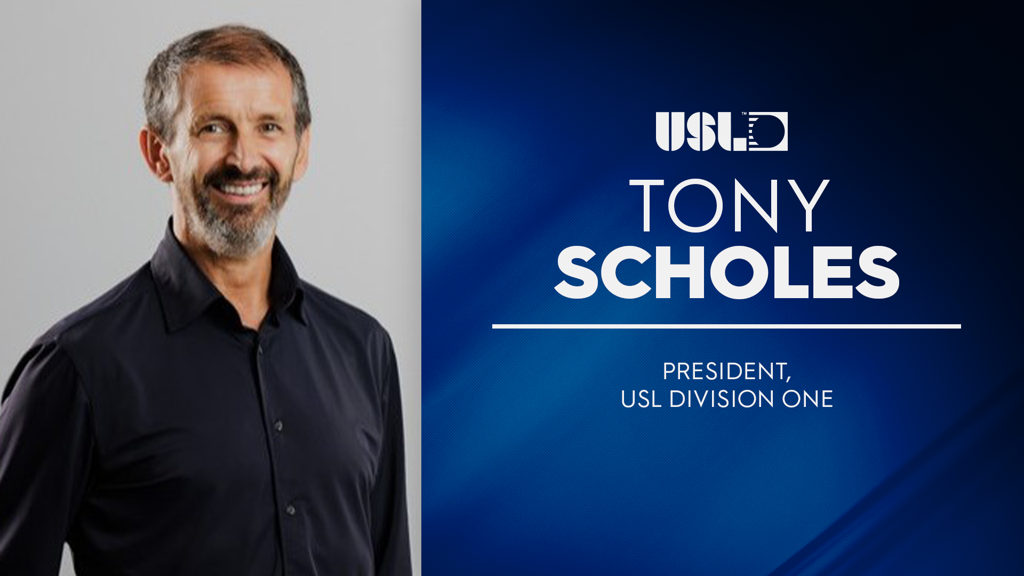
One of the biggest questions people have had since the USL announced promotion/relegation was how they would tie it to the playoffs. There is an option they could do, but it would result in only having one playoff. USL would have a playoff for Division One, but they would eliminate the concept for the Championship and League One. It might not be the most popular idea here in the U.S., but the main goal for the lower leagues is to get promoted, not to win a trophy. They would retain the league title for those two leagues with the winner being the team with the most points at the end of the season, just like how it is in the European leagues. The purpose is to create fairness for the top performing team(s) in the two lower leagues and reduce confusion. If there is a need for a playoff format, they could adopt the format the Bundesliga uses where the 16th best team in the first division and the 3rd best in the second division face-off in a two-leg match to see who would be in the first division the following season. The other option is the Championship concept, where the teams who finished 3rd through 6th in the table compete in a promotion playoff. The semi-finals are two-leg matches while the final is a single-leg match. The winner is promoted to the EPL. The execution of promotion/relegation must be done perfectly to retain fans, gain fans, prevent confusion, and be entertaining.
USL already has a division one league with their women’s Super League, who is competing against the NWSL. Currently, the S League has only nine teams (Brooklyn FC, Carolina Ascent FC, Dallas Trinity FC, DC Power FC, Ft. Lauderdale United FC, Lexington FC, Spokane Zephyr FC, Sporting Jax, and Tampa Bay Sun FC) to the NSWL’s 14 teams (3 teams in the works). The Super League will be adding an additional nine teams (Athletic Club Boise, New York Cosmos, Ozark United FC, Buffalo Pro Soccer, Chattanooga Red Wolves FC, Forward Madison FC, Indy Eleven, Oakland Soul SC, and USL Palm Beach) with all but three to have their inaugural season to be determined. What makes the S League unique from the rest of the soccer leagues in the U.S. is that they use a fall-summer schedule. Competing against a top five women’s league in the world is a tall ask, but it shows the ambitions of USL.
They are also willing to take risks by voting to pass promotion/relegation for the men’s league and have a fall-summer schedule for the S League. If the S League schedule format proves successful, it stands to reason that they would move the men’s leagues to the same schedule. It would also avoid the organization from having to fight MLS for viewership when the leagues are in play, especially when they launch a direct rival and are at their most ambitious point in their history. The same can be done for the S League if promotion/relegation is successful for the men. USL can start establishing lower women’s leagues and introduce promotion/relegation to the women’s game here in the U.S.
Many would say USL still stands no chance at competing against MLS, even with promotion/relegation and having a division one league. That is the case when you look at the quality of the players is finance, but that is the reason why the USL made these decisions based on the reports prior to the announcements and afterwards. Promotion/relegation and the introduction of a division one league could see an increase in investors. We are already seeing that with the likes of Gio Reyna joining Fort Lauderdale as an investor, BellTower Partners investing into USL, Sofia Huerta and Kasey Keller joining the Athletic Club Boise ownership group, and the Chickasaw Nation becoming an investor of the OKC for Soccer just this year alone. Then there is the expansion fee for MLS, MLS Next Pro, and the USL leagues. MLS charges an astounding $500 million! Yes, the money is used to construct a proper stadium, acquire players, etc., but at this point it will discourage many from purchasing a franchise license. MLS currently only has two leagues and one of them is advertised as a development league to prepare for MLS. The expansion fee for an independent team to join MLS Next Pro is unknown, but Sports Business Journal reported in 2024 that it is significantly cheaper than the USL Championship. The fee to join the USL Championship is $20 million while League One is only $5 million. These two fees are significantly lower than MLS and that will be more appealing to potential owners, but unlike the MLS fee, it is not enough for a stadium, training grounds, and players. As for what the fee is to join USL Division One, that is unknown at the moment.
I highly recommend reading the ESPN article by Jeff Carlisle titled “Will USL’s Move to Pro-Rel Change U.S. Soccer, Threaten MLS?” In there, Carlisle discusses the reasons behind the decision and that it is mostly financial. For example, a USL spokesperson said they expect to see an increase in commercial revenue by 15% to 30% due to promotion/relegation. Also, the former owner of San Diego Loyal lost $40 million in 4 seasons. As for the reaction from MLS, we have not heard one yet. The only possible reaction we have seen from them is what the former MLS Next Pro president, Charles Altchek, told to Backheeled back on March 6th, 2025. In the interview, he told them they aim to have 40 to 50 teams and a possible second league with one of the MLS Next Pro leagues being a second division, putting it in direct competition with USL Championship. The biggest question is, whichever league that is, can compete for fans? Due to the Apple TV deal, we currently do not have the ratings of MLS Next Pro. The closest idea we have is the attendance, which is 5,580 for USL Championship per match to MLS Next Pro’s 3,361, according to Transfermarkt. Unlike the attendance, the viewership for USLC is much higher where the season premiere match had 453,000 viewers. MLS Next Pro’s massive expansion plan announcement date was either a coincidence, or MLS got word USL’s promotion/relegation implementation with the division one news, and this was their response. I will let you come to your own decision.
It seems, as of right now, it appears MLS will sit back and wait to see how the USL’s Division One and promotion/relegation will play. Division One and promotion/relegation will either be successful for USL and lead them to the financial success they are hoping for or lead to the possible collapse of USL. American sports fans are not the only ones keeping their eyes on USL now, but the rest of the soccer world is after their two massive news. The coming years are going to be exciting times for American soccer!
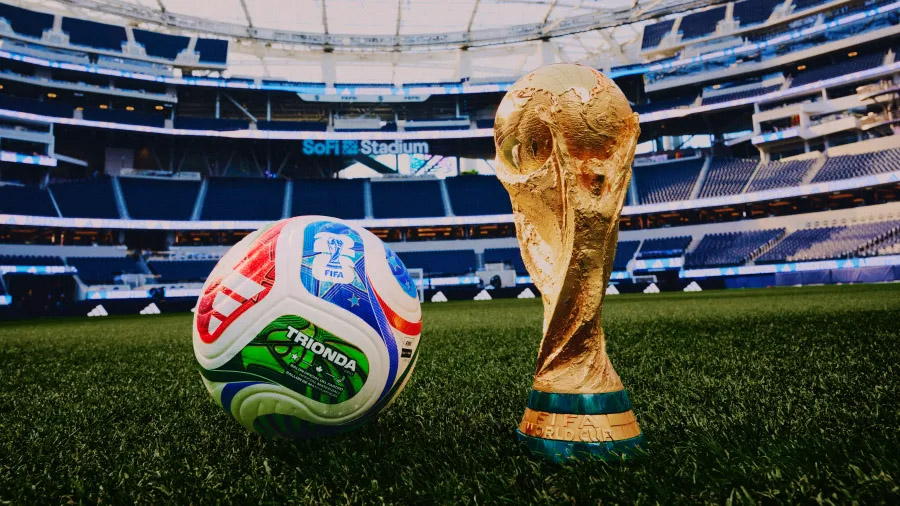
From Maradona to Messi: A Quick Look at World Cups 1986–2022
Thomas Deschaine (@uskeeper on X and us_keeper on Instagram)
A quick look back at the last ten World Cups reveals how the world’s greatest sporting event has evolved and grown through the decades. With over 200 days until the 2026 FIFA World Cup kicks off, here’s a high-level recap of the tournaments that shaped its legacy, and a glimpse of what’s next.
1986 – Mexico
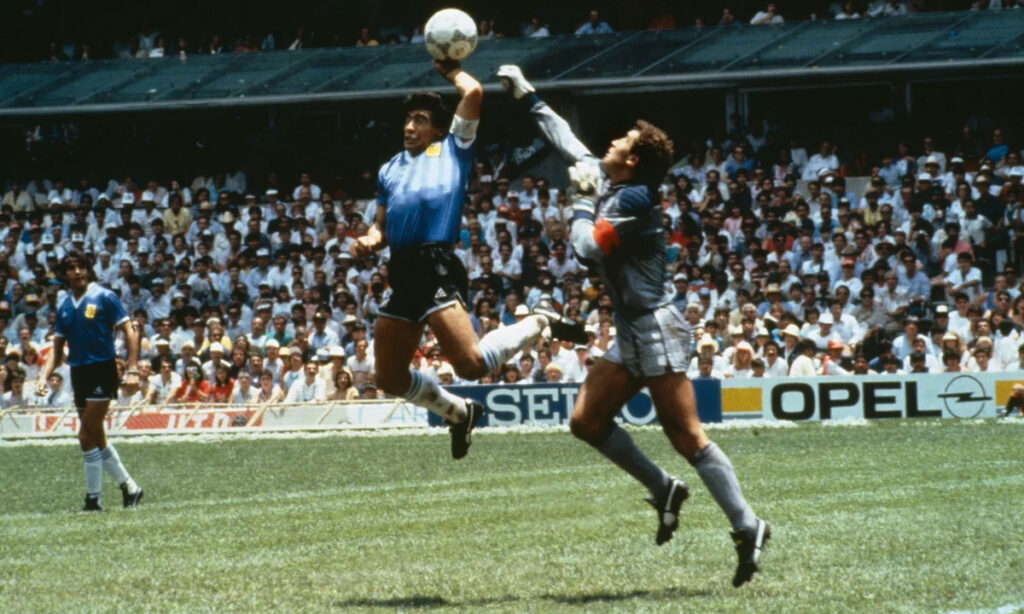
Diego Maradona delivered a World Cup for the ages, scoring both the “Goal of the Century” and the infamous “Hand of God” in the same match, then leading Argentina past West Germany to claim their second World Cup title.
1990 – Italy
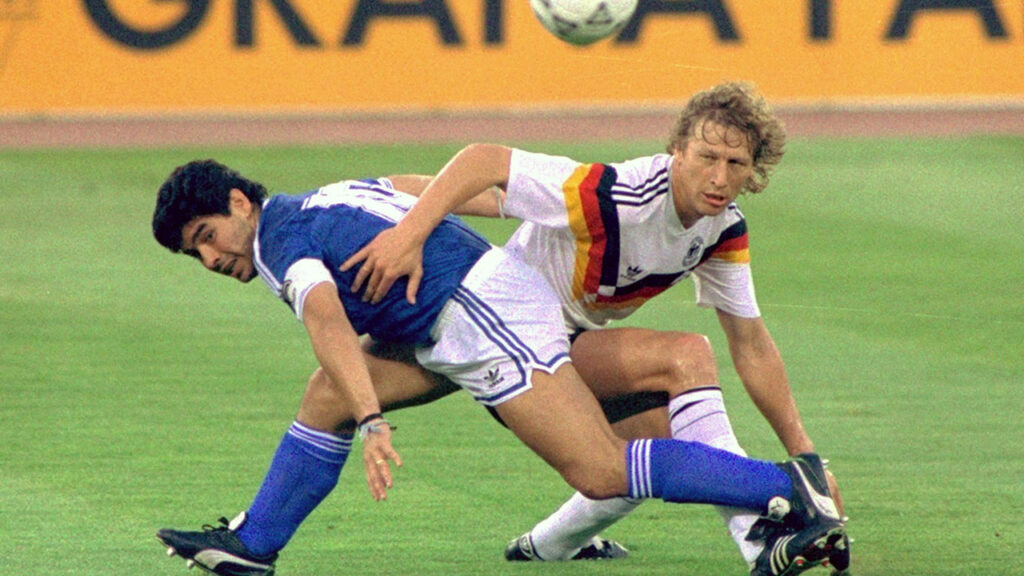
The USA returned to the World Cup after a 50-year absence in what became the lowest-scoring tournament in history, as West Germany edged Argentina 1–0 on a late penalty. It marked West Germany’s final World Cup before reunification.
1994 – United States
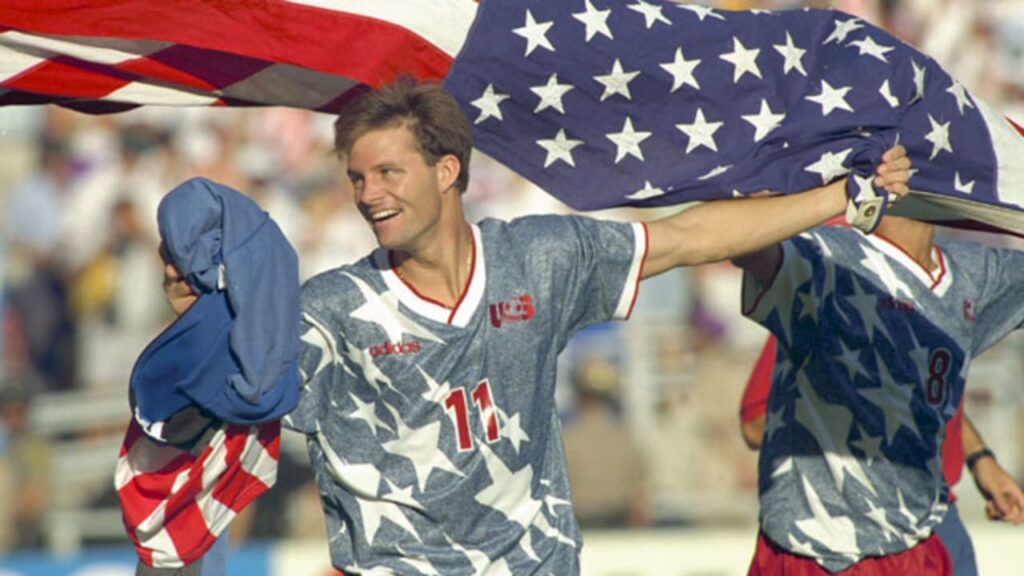
The USA hosted its first-ever World Cup, setting all-time attendance records as Brazil defeated Italy in the tournament’s first final decided by a penalty shootout in front of the largest crowds in US since the 1984 Olympics.
1998 – France
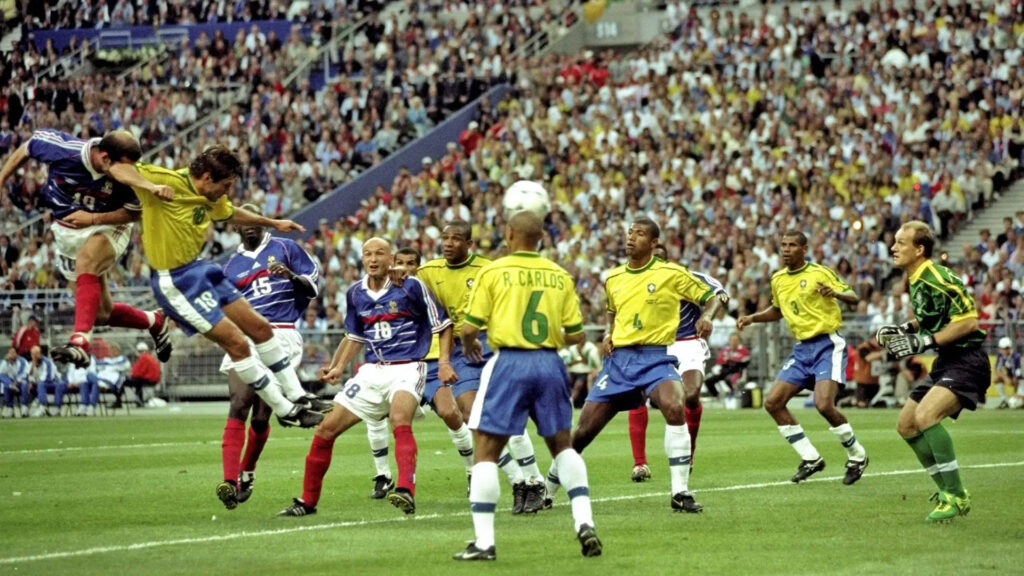
FIFA’s first 32-team World Cup saw host nation France capture its first-ever title, becoming the seventh country to win the trophy. Led by Zinedine Zidane triumphed on home soil with a commanding victory over defending champions Brazil.
2002 – South Korea/Japan
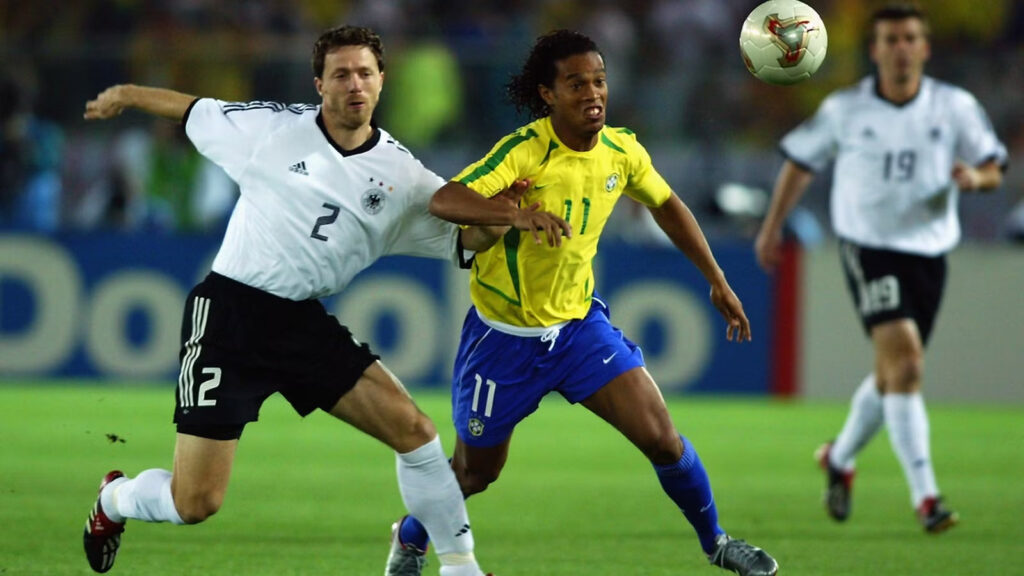
The first World Cup with co-hosting nations saw South Korea stun many by reaching the semifinals, while Brazil claimed their fifth title, powered by Ronaldo’s two goals in the final against Germany.
2006 – Germany
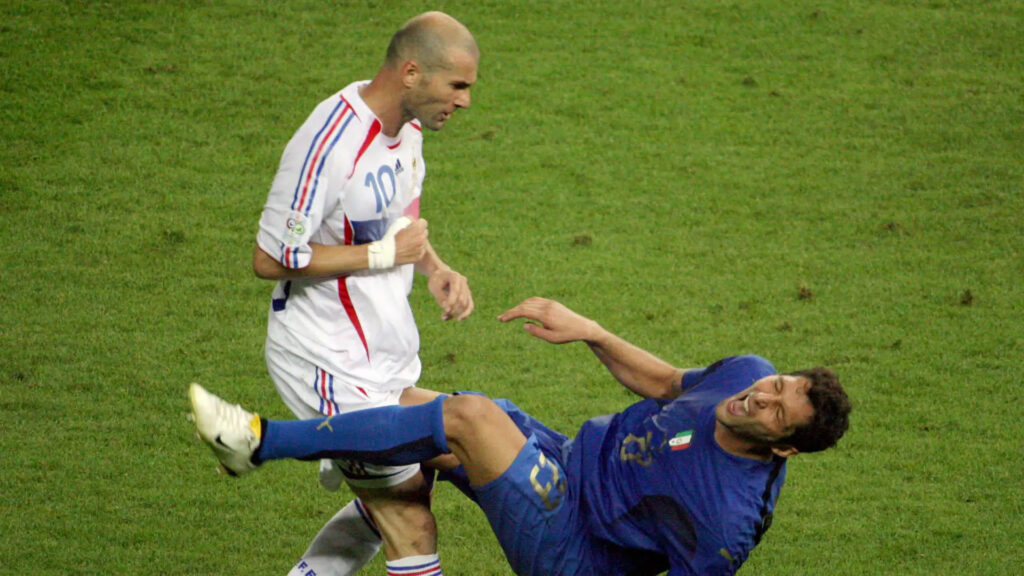
Germany came up short on home soil, losing in extra time to eventual first-time finalist Italy in the semifinal. Italy went on to claim its fourth World Cup, edging France on penalties in a final forever marked by Zidane’s infamous headbutt in extra time.
2010 – South Africa
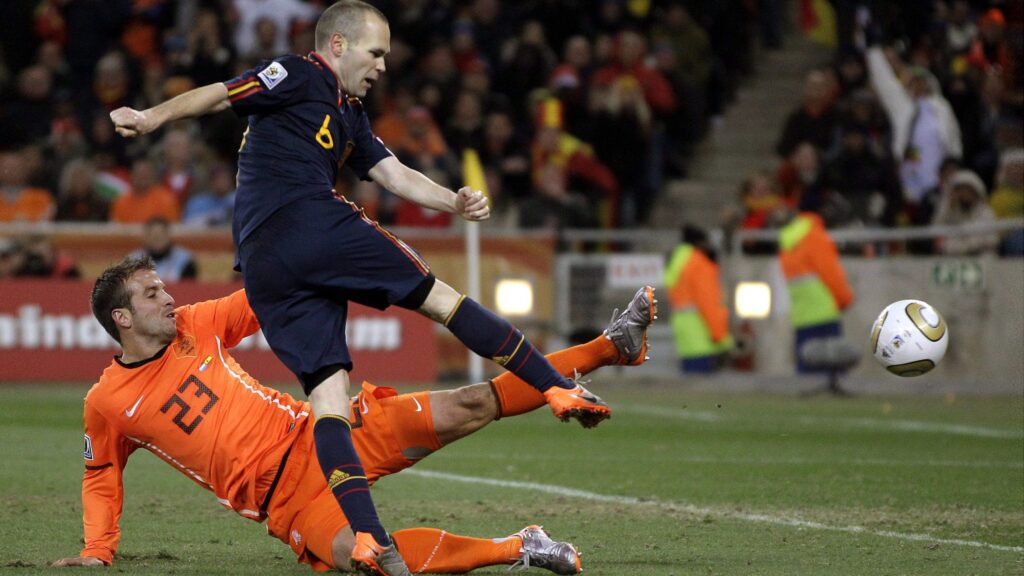
The first World Cup hosted by a CAF nation, South Africa, saw the host nation become the first ever to fail to advance past the group stage. Meanwhile, Spain captured their first World Cup, showcasing their tiki-taka mastery and defeating the Netherlands in extra-time with Andrés Iniesta’s decisive goal.
2014 – Brazil
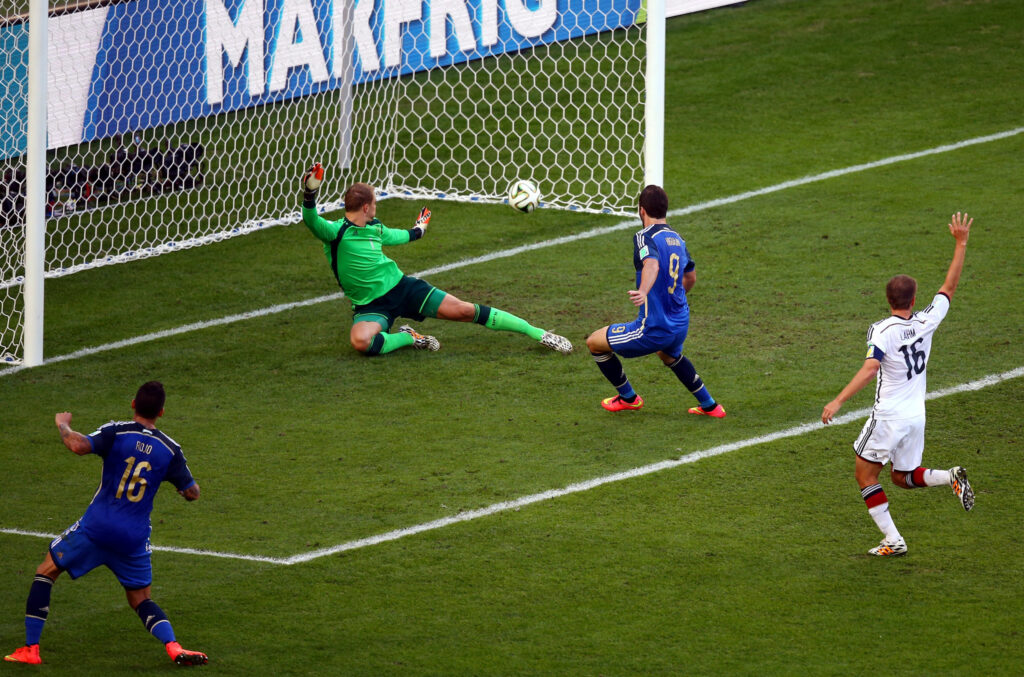
Host nation Brazil reached the semifinals on home soil but suffered a shocking 7–1 defeat to Germany and then fell 3-0 to the Netherlands in the third-place match. Germany went on to defeat Argentina in extra time, with Mario Götze scoring the decisive goal, while Lionel Messi claimed the Golden Ball as the tournament’s best player.
2018 – Russia
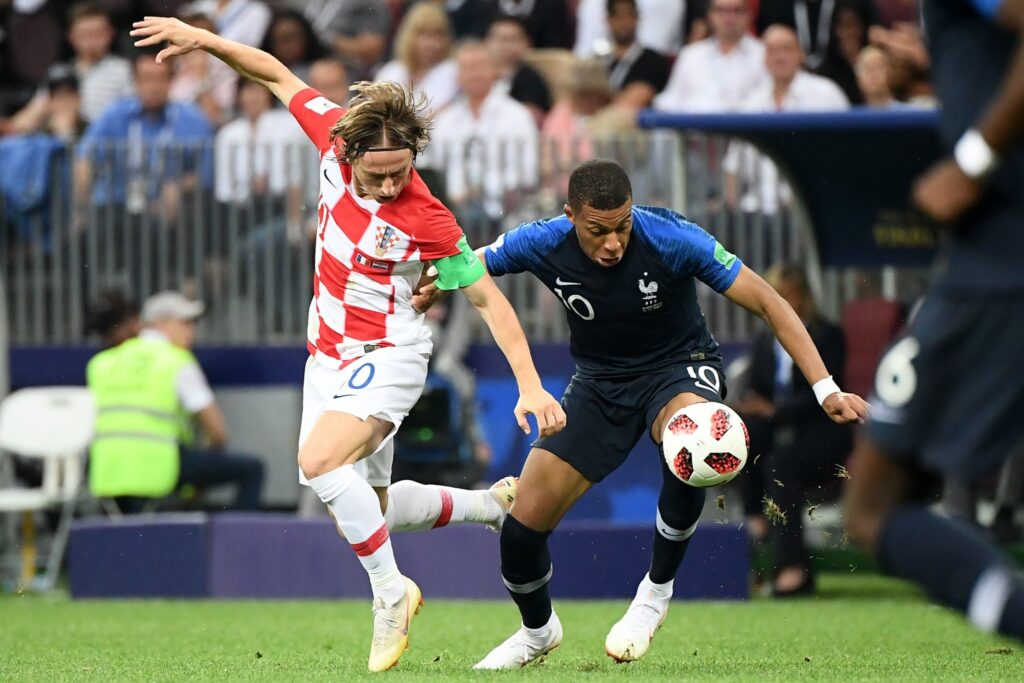
France’s golden generation, spearheaded by tournament Best Young Player Kylian Mbappé, captured their second World Cup title with a thrilling 4–2 victory over Croatia, led by Golden Ball winner Luka Modrić.
2022 – Qatar
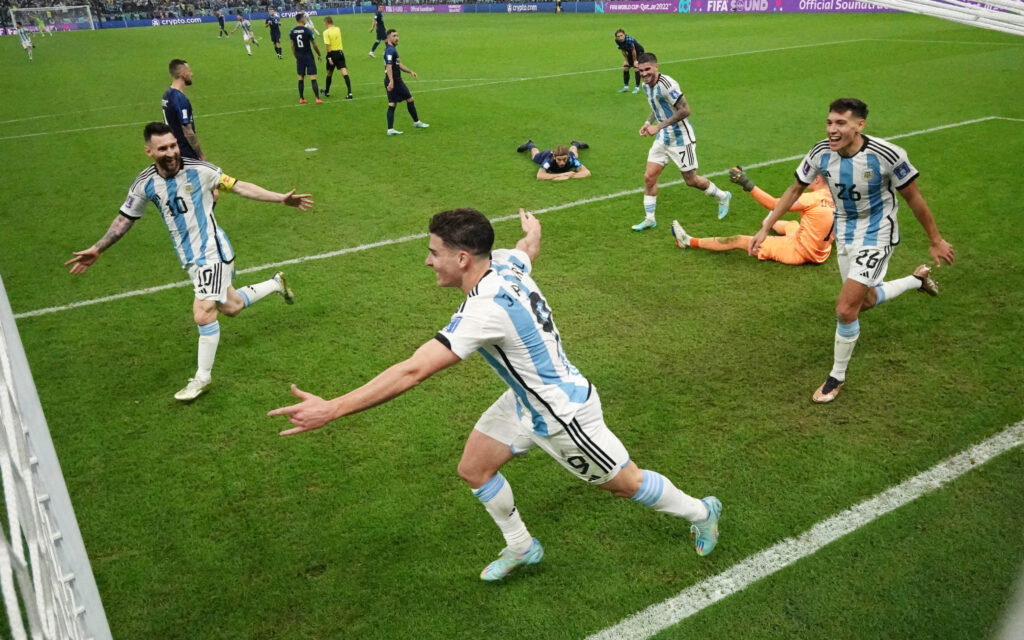
The 2022 World Cup, overshadowed by controversies over migrant worker treatment and extreme heat, which pushed the tournament to November and December, ultimately delivered a historic finale. Lionel Messi achieved crowning glory as Argentina triumphed on penalties in a thrilling 3–3 final against France, highlighted by Kylian Mbappé’s hat-trick.
2026 – United States/Mexico/Canada
The 2026 World Cup will feature a major expansion from 32 to 48 teams and, for the first time ever, be hosted by three nations. Mexico will make history as the first country to host matches in three different World Cups, while the United States becomes the sixth nation to host at least twice. What unforgettable moments will define this landmark tournament?
USMNT
One Home or Many? The Debate Over a Primary Venue for U.S. Soccer
Published
1 month agoon
October 16, 2025
Thomas Deschaine (@uskeeper on X and us_keeper on Instagram)
The logics of the United States make it almost impossible for the USMNT or USWNT to have a primary venue to play all of their home matches but a trend of playing in a handful of stadiums has been developing over the last couple of cycles. US Soccer says there are specific factors behind where matches are played, some make sense, while others come across as lazy or lacking creativity.
If and when Major League Soccer aligns with the FIFA calendar and observes international breaks, more MLS stadiums could become available for matches. While not all MLS venues currently feature natural grass, US Soccer has indicated they would be willing to invest in installing grass, though at a cost of around $500K and with potential concerns about surface reliability.
Global Approach to Scheduling
Many of the top-tier international teams play their World Cup qualifiers and other critical matches in a primary venue or two. Here’s a sample of some of those countries and generally where they play based on my research.
Here are some of the more notable nations that play nearly all of their home matches at a single venue, a setup made practical by their smaller size and simpler logistics, which also makes it easier for fans.
Germany and Spain are known for rotating their non-critical home matches across multiple venues.

Argentina-Estadio Monumental (River Plate)
Belgium– King Baudouin Stadium (Brussels)
Colombia-Estadio Metropolitano Roberto Meléndez
England-Wembley Stadium
France– Stade de France (Saint-Denis, near Paris)
Italy-Stadio Olimpico
Northern Ireland-Windsor Park (Belfast)
Norway-Ullevaal Stadion (Oslo)
Portugal– Estádio da Luz (Lisbon)
Republic of Ireland-Aviva Stadium (Dublin)
Scotland-Hampden Park (Glasgow)
Uruguay-Estadio Centenario
Wales-Cardiff City Stadium
What’s in a location?
Here’s a look at the past few cycles, highlighting the USMNT’s home matches and the venues they’ve used. While US Soccer has clarified that they don’t control Gold Cup or Nations League venue selection, a point still under debate, they do manage the locations for Friendlies and World Cup qualifiers and continue to review and adjust those choices.
2026 Cycle (Matches Scheduled Through the end of 2025) – 46 Home Matches – 30 unique cities
So far, half of the USMNT’s home matches in the 2026 cycle have been held across eight venues. Only two more windows, March and May/June, remain for Friendlies before the 2026 World Cup.
- 4-AT&T Stadium, Arlington, Texas
- 4-Energizer Park, previously CityPark, St. Louis, Missouri
- 4-Q2 Stadium, Austin, Texas
- 3-Inter&Co Stadium (previously Orlando City Stadium and Exploria Stadium, Orlando, Florida
- 2-Allegiant Stadium, Paradise, Nevada
- 2-Geodis Park, Nashville, Tennessee
- 2-Rentschler Field, East Hartford, Connecticut
- 2-TQL Stadium, Cincinnati, Ohio
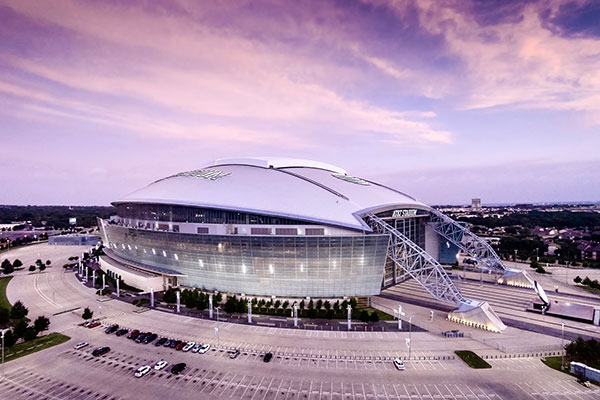
AT&T Stadium, Arlington, TX
2022 Cycle – 43 Home Matches – 24 unique cities
I can almost give US Soccer a pass on city and venue selection during the 2022 cycle, given the global circumstances at the time. That said, it’s interesting that they scheduled three consecutive home World Cup qualifiers in Ohio, with final round two matches in Columbus. Columbus has been a recurring choice, hosting multiple qualifiers in 2014, 2018, and 2022, handling one match each during both the semifinal and final rounds of qualifying in 2014 and 2018.
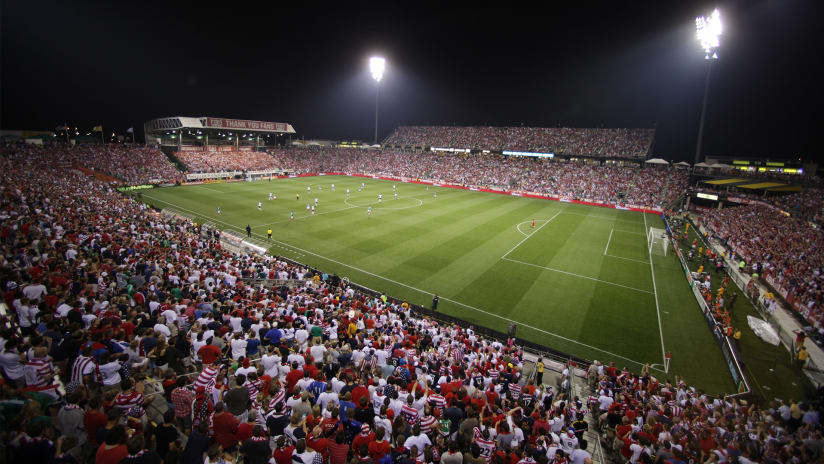
Lower.com, Columbus, Ohio
2018 Cycle – 47 Home Matches – 33 unique cities
During the 2018 cycle, the USMNT played in a wider variety of cities and venues. Aside from four matches in Carson, California for the January camp, they only repeated a location eleven times.
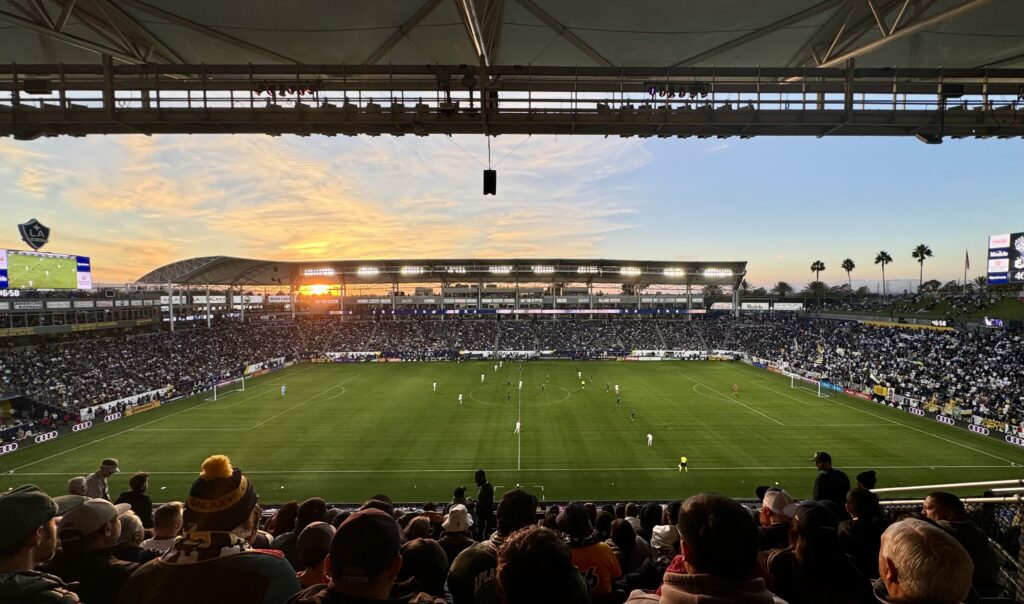
Dignity Health Sports Park, Carson, CA
2014 Cycle – 43 Home Matches – 29 unique cities
During the 2014 cycle, the USMNT repeated cities twelve times, but only two cities hosted more than two matches: Carson, California, where two of three games were for Camp Cupcake, and Kansas City, Kansas, which hosted three matches.
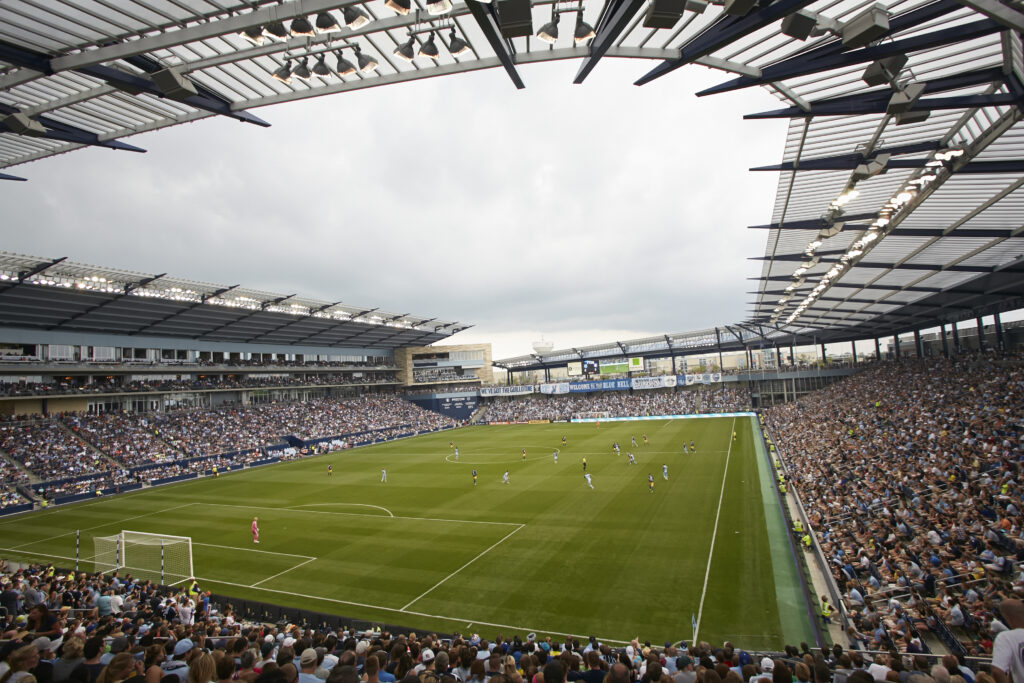
Children’s Mercy Park, Kansas City, Kansas
2010 Cycle – 35 Home Matches – 18 unique cities
One of the leanest home schedules in recent cycles saw the USMNT play in just 18 different cities, with 11 of them hosting only a single match. Over half of their home games were concentrated in four cities: Carson, California (7 matches); Chicago, Illinois (5 matches); and Foxborough, Massachusetts and Washington, D.C. (3 matches each).
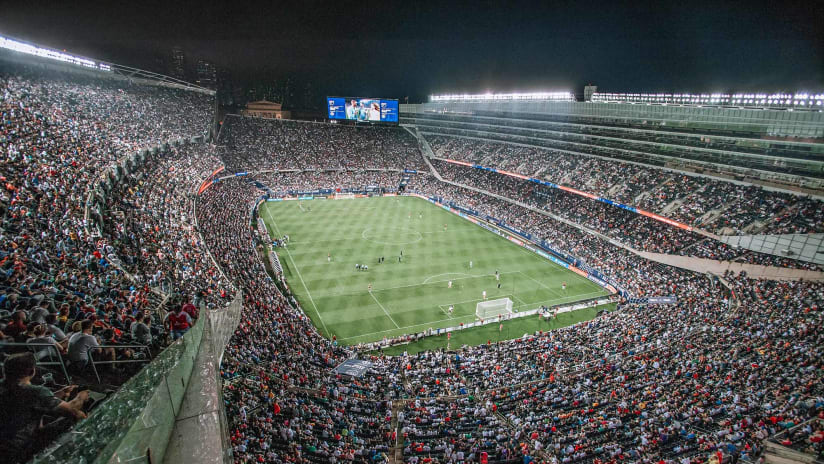
Soldier Field, Chicago, IL
2006 Cycle – 44 Home Matches – 24 unique cities
The USMNT played eight matches in Foxborough, Massachusetts—double the number held in the next two cities, Columbus, Ohio, and Miami, Florida, which each hosted four matches. Notably, the team has excelled in Foxborough, losing only once in 22 games played there.
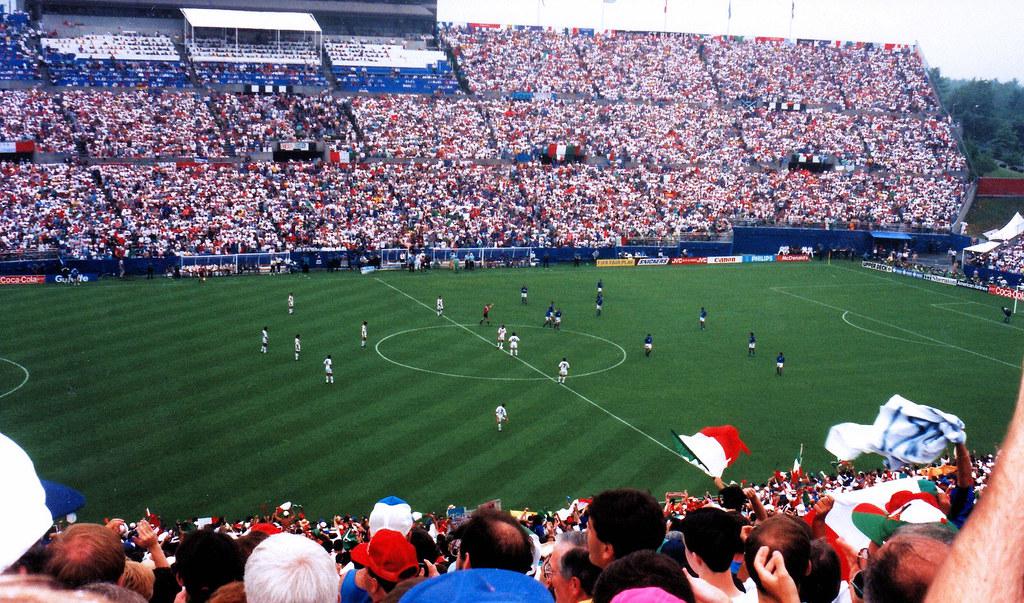
Foxboro Stadium, Foxborough, MA
2002 Cycle – 38 Home Matches – 16 unique cities
During the 2002 cycle, California was clearly a preferred destination for the USMNT, hosting matches in five different cities across twelve games. Foxborough, Massachusetts, and Washington, D.C. each hosted five matches as well.
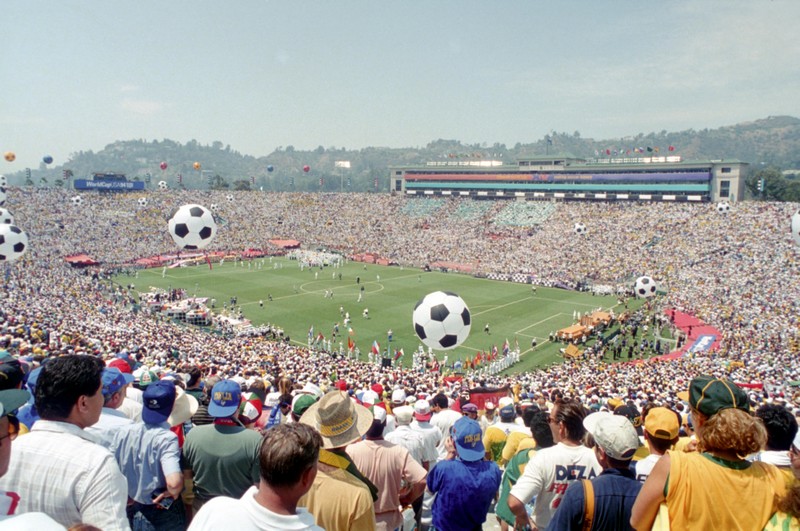
Rose Bowl Stadium, Pasadena, CA
1998 Cycle– 40 Home Matches – 21 unique cities
Washington D.C. was the city of choice for the USMNT during the 1998 cycle playing six matches. The USMNT would also play more than two matches in Los Angeles, California (5 matches), Foxborough, Massachusetts (4 matches) and Pasadena, California (3 matches) while playing only one match in twelve other cities.
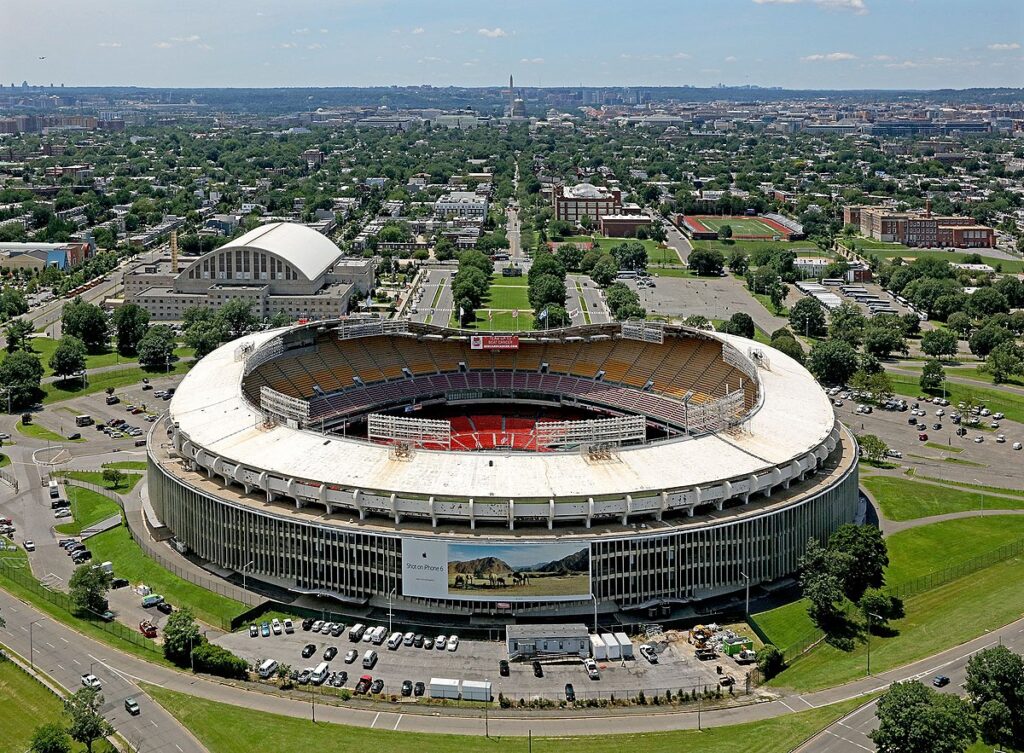
RFK Stadium, Washington, DC
Long Term Venue Strategy
While US Soccer may favor a single venue for most USMNT and USWNT matches, doing so would limit access for thousands of fans across the country. However, with the move to Georgia and the Arthur M. Blank U.S. Soccer National Training Center set to open in early 2026, ahead of the World Cup, it’s likely that future matches will focus on venues within three to four hours of Atlanta. We can expect the majority of games to continue taking place in roughly ten to twelve core cities.
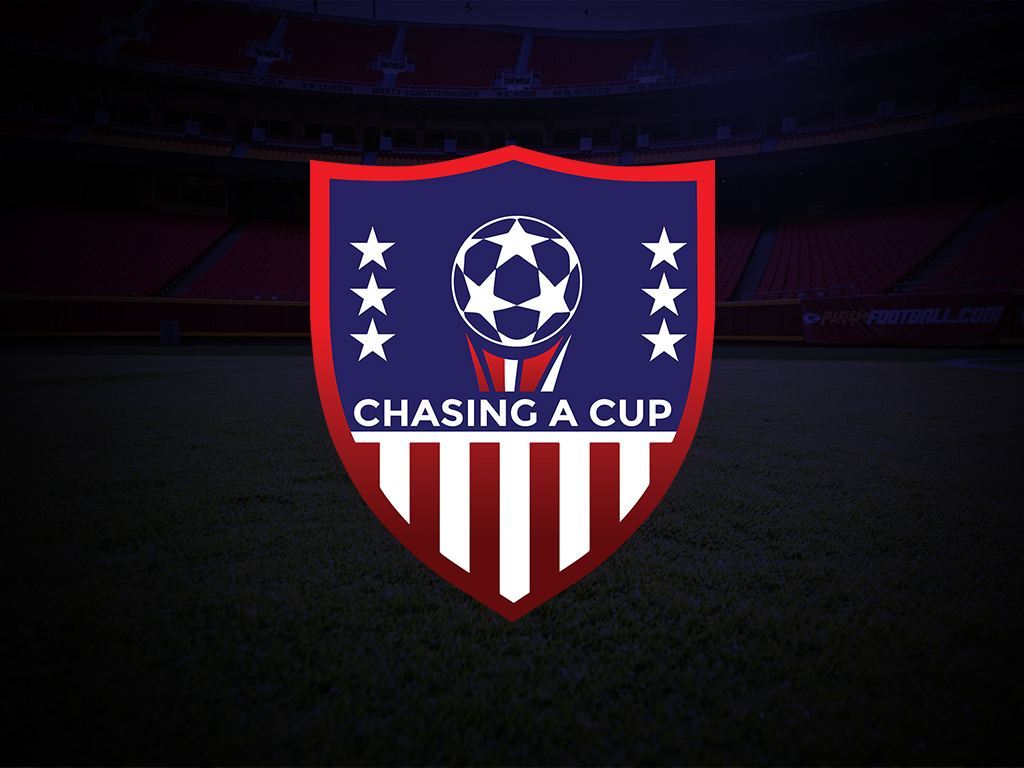

USL’s American Soccer Dream

From Maradona to Messi

One Home or Many? The Debate Over a Primary Venue for U.S. Soccer

Trending
-

 Club News1 year ago
Club News1 year agoAmerican Transfers: Stock Up & Stock Down
-
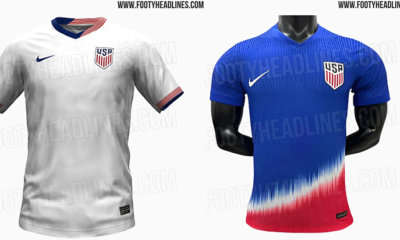
 USMNT2 years ago
USMNT2 years agoUSMNT Kits Come in Different Styles and Colors
-

 Club News6 years ago
Club News6 years agoJulian Vincente Araujo
-
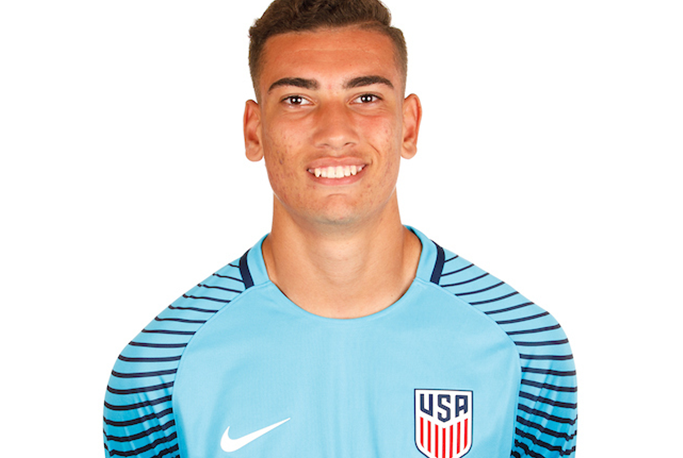
 Club News5 years ago
Club News5 years agoCJ dos Santos, Benfica
-

 USMNT5 years ago
USMNT5 years agoA Hidden Gem: Barça Residency Academy
-
USMNT3 years ago
World Cup Format History
-

 USMNT2 years ago
USMNT2 years agoIs the MLS Specifically Targeting Expansion to USL Cities?
-
USMNT6 years ago
MLS Quota

